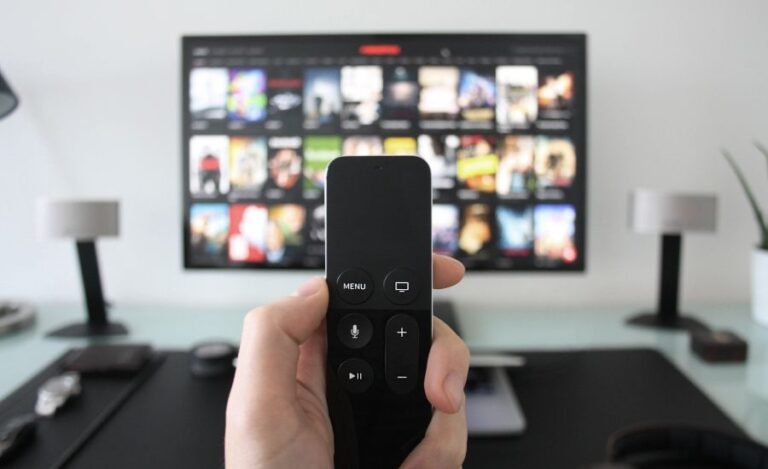Home Theatre Bypass – The Definitive Guide For 2023
Hey there movie buffs, audiophiles, and home theatre enthusiasts! Have you ever wondered what the term “home theatre bypass” means? If not, no worries! I’ve got you covered. Today, let’s take a deep dive and explore everything you need to know about it. I’ll cover what it is, how it works, and most importantly, why it matters.
So whether you’re an aspiring home theatre guru or simply looking to enhance your movie-watching experience, keep scrolling to know how you can take your entertainment to the next level.
What is a home theatre bypass all about?
For the record, it is a feature found on some audio/video receivers or preamps. This helps you to bypass the internal processing and amplification of the device, and instead pass the signal directly to your external amplifier or power amplifier. This feature is typically used by audiophiles or home theatre enthusiasts who want to use high-end external amplification or processing equipment to enhance the audio quality of their home theatre setup.
To break it down in simple words, the bypass function allows you to connect the audio and video sources directly to your external amplifier. Also, it also lets you maintain control over volume and other settings using the receiver or preamp.
Overall, a home theatre bypass can be a useful feature for those looking to achieve the highest quality audio and video performance in their home theatre system. However, it’s important to note that not all receivers or preamps have this feature. So, be sure to check the specifications before making a purchase.
Why would I want to bypass my surround sound system?
If you’re considering bypassing your surround sound system, it’s likely because you’re looking to improve the overall audio quality of your home theatre setup. As I’ve mentioned earlier, bypassing lets you take the advantage of high-end external amplification or processing equipment. As a result, it gives you a more detailed and precise sound experience.
In a typical home theatre setup, your audio signal passes through several layers of processing before reaching your speakers. This can include things like digital signal processing, equalization, and amplification. All of these can have an impact on the final sound quality.
Modern surround sound systems are designed to provide high-quality audio performance. However, they may not always be able to match the quality of high-end external equipment. So, by bypassing your surround sound system, you’re essentially removing these layers of processing. Moreover, you’re allowing the audio signal to pass through a more direct path to your external amplifier or power amplifier. This can result in a cleaner, more detailed sound that is free from any distortion.
Lastly, whether you should bypass your surround sound system eventually depends on your personal preferences. Also, it depends on the quality of your equipment. So, if you’re an audiophile looking to achieve the highest quality audio performance possible, then bypassing may be worth considering.
In contrast, if you’re happy with the performance of your current setup, then feel free to skip this!
Can you bypass a Dolby Atmos or DTS-X system?
The short answer is Yes! it is pretty much possible to bypass a Dolby Atmos or DTS:X system.
However, it’s important to keep in mind that these systems are specifically designed to provide an immersive, 3D audio experience. So, keep in mind that bypassing these systems can potentially limit their advanced capabilities.
If you’re considering bypassing a Dolby Atmos or DTS:X system, you should carefully consider the reasons for doing so. It’s true that high-end external amplification or processing equipment may be able to provide a cleaner, more precise sound. However, it may not be able to replicate the immersive, 3D audio experience that these advanced systems are designed to provide.
I should also let you know that not all receivers or preamps with Dolby Atmos or DTS:X capabilities may have a bypass function. So, if this is an important feature for you, be sure to carefully research and pick a receiver or preamp that has this option.
All in all, whether or not to bypass a Dolby Atmos or DTS:X system is a personal decision that depends on your preferences. If you’re primarily focused on achieving the highest quality audio performance possible, then go ahead with the bypassing. However, if you’re looking for an immersive, 3D audio experience, then it’s probably best to stick with the advanced technologies built into these systems.
Are there any downsides of home theatre equipment bypassing?
While bypassing your home theatre can provide some enhanced audio quality benefits, there are also potential downsides you must consider. Here are a few things to keep in mind:
Inconvenience
One of the primary perks of using a surround sound system is the convenience it provides. With a receiver or preamp, you can control all of your audio sources from a single device, adjust the volume and settings, and easily switch between different modes. But, if you bypass it, you may need to control each component separately.
Limited features
Many receivers and preamps come with a range of advanced features. Some of them are room correction, digital signal processing, and automatic calibration. Bypassing will make you lose access to these features.
Additional expenses to bear
While bypassing your home theatre may provide a higher audio quality, it can also come at a significant cost. High-end external amplification and processing equipment can be quite expensive, and you may need to invest in additional components or cables to connect everything together.
Compatibility issues
Not all external amplifiers or power amplifiers will be compatible with your surround sound system. In that case, you’ll need to make sure that any external equipment you purchase is compatible with your receiver or preamp.
Wrapping Up
Lastly, I would like to point out that it’s crucial to carefully consider the potential benefits and drawbacks of home theatre bypass before making any changes. If you’re determined on achieving the highest audio quality possible, then go for it.
On the other hand, if you value convenience, features, and cost-effectiveness, then sticking with your default surround sound setup may be the wise option.



